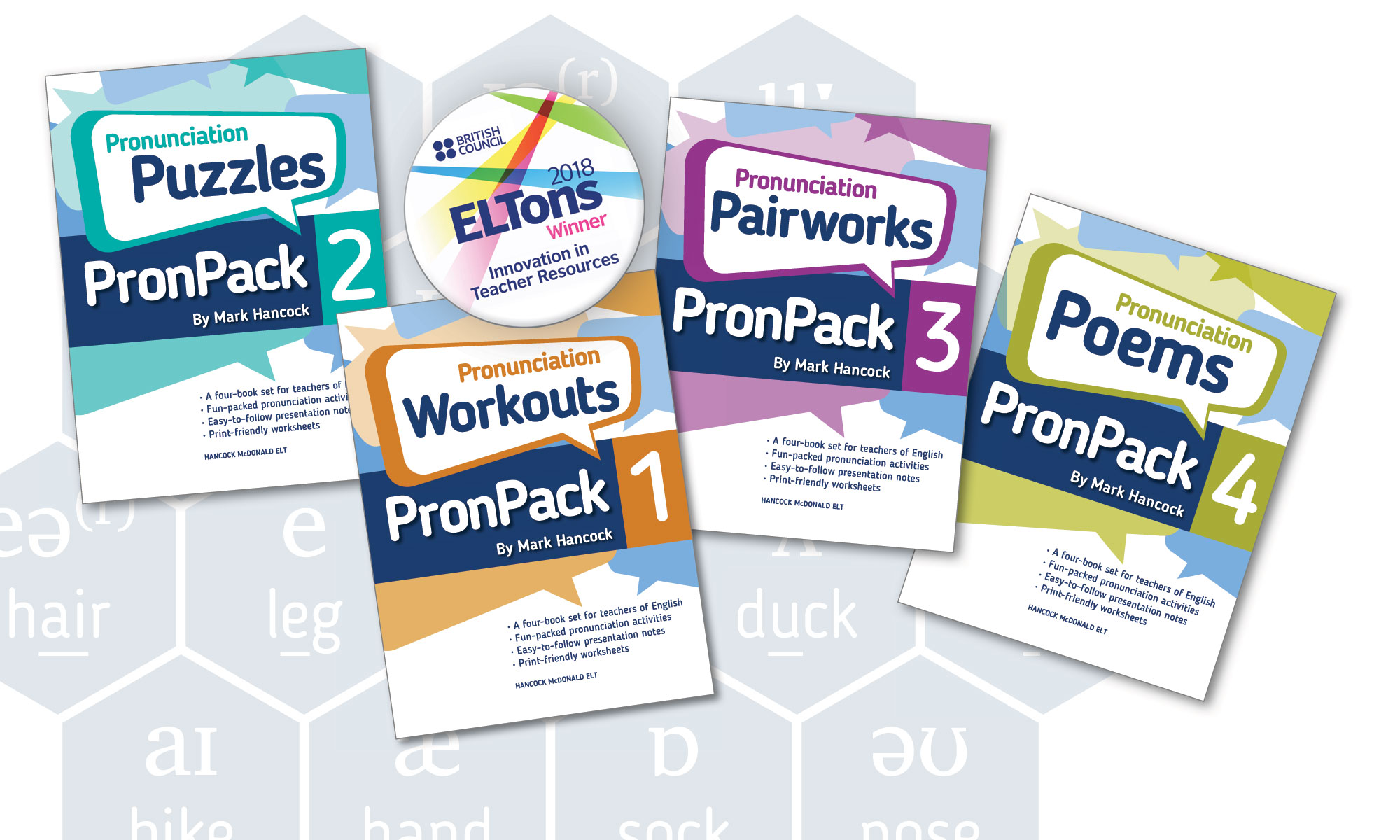
Pronunciation Games (CUP 1995) was my first book, and it still sells today over two decades later. It’s a resource book for teachers, consisting of 36 photocopiable game pages along with step by step teaching notes. It proved to be immediately popular and won an award – the Frank Bell prize – shortly after publication. Nowadays, when I am out at ELT events, people often tell me how much they have been influenced by the book.
In the years since writing Pronunciation Games, I went on to write a wide variety of ELT books about pronunciation and other topics, but throughout that time, I have been reflecting on that first book: What was good about it? What were its shortcomings? What would I do differently today? The answer to these questions are what lie at the heart of my new series PronPack 1-4.
What was good about Pronunciation Games? I would say that it makes something which teachers find intimidating into something which is digestible and fun. Teachers often feel insecure about phonology. There is something strange and esoteric about those phonemic symbols. The relationship of sound and spelling appears to be totally random, as do the rules of word stress placement. And how on earth can I teach the ups and downs of intonation if I can’t even hear them myself? Pronunciation Games provided bite-sized pronunciation points within the context of a game which students could enjoy.
What were its shortcomings? First of all, I would say there was a problem with the second word in the title, games. When I decided to write a book of pronunciation games, I had already made quite a lot of them, so I knew the idea had possibilities. However, the games I had made were for the pronunciation points which were most easily put into a game format. I had gone for the low hanging fruit. When I tried to extend the format to other areas of phonology, particularly connected speech and intonation, this became much more difficult. Thus, it turned out that the need to turn everything into a game became a tight constraint, perhaps too tight. In some cases, the games became over-complicated and difficult for the teacher to explain and set up in class.
Secondly, I fear that Pronunciation Games was too specific regarding the target accent. For instance, some of the games only work for a non-rhotic accent such as English, where the letter ‘r’ is not pronounced after a vowel in words like hair, car, fork or girl. These games could be problematic in class for teachers with a rhotic accent such as American, where the ‘r’ is pronounced in those words.
Finally, I think a lot of teachers would have appreciated an audio to go with the book.
What would I do differently today? Exactly what I have done with the PronPack series. First of all, I have abandoned the games constraint and branched out into different activity types. The book which most resembles Pronunciation Games is PronPack 2: Pronunciation Puzzles. The remaining three books have different activity types. PronPack 1: Pronunciation Workouts provides drills for learners to actively train their articulatory muscles. PronPack 3: Pronunciation Pairworks provides communicative activities to highlight the connection between pronunciation and meaning. And PronPack 4: Pronunciation Poems provides memorable texts to display pronunciation points in a form which is fun to recite. It turns out that different pronunciation points are best suited to different activity types, and having four for me to choose from enabled a much better fit than just games.
Secondly, I have tried to accent-proof the material as far as possible. For instance, I have tried to ensure that the activities will work whether or not you or your students pronounce the ‘r’ in words like hair, car, fork or girl.
And finally, I have added audio material for those teachers who feel that they need it.
I have tried to retain the features of Pronunciation Games which I feel were good. I hope it demystifies the phonology and presents it in bite-sized, fun-to-do activities for the classroom. Obviously, time has moved on since my first book. Few people had computers back then, and I wrote the book by hand. Since then there has been a digital revolution, and PronPack was not only written on a computer, it is designed to be read on one too. It is a digital product. Instead of photocopying the activity pages, teachers can print them out instead – or project them. It is Pronunciation Games for a new age.

